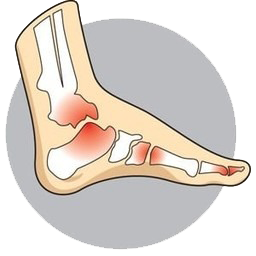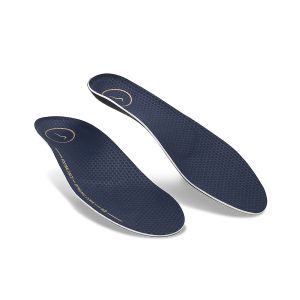 Arthritis is a disease characterized by the inflammation of the cartilage and lining of the body’s joints. Inflammation causes redness, warmth, pain, and swelling. The primary targets for arthritis are people over the age of 50.
Arthritis is a disease characterized by the inflammation of the cartilage and lining of the body’s joints. Inflammation causes redness, warmth, pain, and swelling. The primary targets for arthritis are people over the age of 50.
Arthritis is a major cause of foot pain because each foot has 33 joints that can become affected by the disease.
There are many different types of arthritis with 3 main types of arthritis being the cause of various foot problems. Anyone can have arthritis; in children, it is called juvenile arthritis.
Osteoarthritis
This is the most common type of foot arthritis. Osteoarthritis causes excessive strain and the wearing away of cartilage in the joints of the foot. Movement becomes very difficult and painful. The pain and swelling worsen while standing or walking, and stiffness usually occurs after periods of rest.
Gout is another form of arthritis that also leads to foot complications. Excess uric acid crystals collect in and around the joints of the big toe. The big toe joint is commonly the focal point due to the stress and pressure it experiences during walking and other weight-bearing activities. This often leads to severe pain in the big toe. Men are more likely to develop gouty arthritis than women.
Another type of arthritis is rheumatoid arthritis. It can develop at any age and there is no known cause for this condition. Rheumatoid arthritis is the most crippling form of the disease that can affect people of all ages. It can cause severe deformities of the joints with associated fatigue of the entire body. People who suffer from rheumatoid arthritis often develop severe forefoot problems such as bunions, hammer toes, claw toes, and others.
Gout Rheumatoid Arthritis Causes
There are many causes of arthritis. Heredity plays a major role. However, arthritic symptoms can develop due to many other factors. Some of these include bacterial and viral infections, prescription and illegal drugs, traumatic injuries, and bowel disorders such as ileitis and colitis.
Forefoot problems such as hammer toes, claw toes, mallet toes, and bunions often develop as a result of arthritis, particularly Rheumatoid arthritis. Problems can also develop in the heel and ankle area due to the erosion of the involved joints.
Solutions
Non-surgical treatment of the arthritic foot includes proper footwear, orthotics, and/or forefoot supports. Arthritic footwear should provide the following benefits:
High, wide toe box (high and wide space in the toe area)
Removable insoles for fitting flexibility and the option to insert orthotics if necessary.
Rocker Soles are designed to facilitate ambulating (walking) and to reduce stress and pain at the ball-of-the-foot.
Arthritic footwear should also accommodate swelling of the foot. Orthotics designed to provide comfort, support, and extra cushioning are also recommended. The proper footwear and orthotics will reduce pressure to provide a comfortable and healthy environment for the foot.









